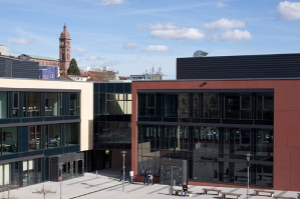

HESMOS is a research project funded by the EU - SEVENTH FRAMEWORK PROGRAMME with these major objectives: Provide advanced simulation capabilities to decision makers in the whole life-cycle of buildings, taking into account energy savings, investment and life-cycle costs; Integrate a Virtual Laboratory to connect CAD and eeTools (energy efficiency Tools) in order to enhance building industry actor's ee-competences; Close the gap between Building Information Modelling (BIM) and Building Automation Systems (BAS) so that decisions can be made economically (energy & cost related) in all life-cycle phases; Integrate surrounding areas extending current BIM to eeBIM; HESMOS - Product: Integrated Virtual Energy Laboratory (IVEL)
Work package 1: Gap Analysis, use Case Scenarios and Requirements Specification. Work package 2: BIM Enhancement Specification, HESMOS Architecture, a descriptive approach to defining Information Delivery Manuals. Work package 3: Specification of the eeBIM Functionality for Implementation and use. Work package 4: Ontology specification for model-based ICT system integration, full prototype of ICT system integration and intelligent access services. Work package 5: Specification of interfaces to material and climate databases, HESMOS enhancements of energy simulation tools, full prototype of the energy simulation tools with interface to IVEL and CAD. Work package 6: Enhancement of the energy-related tools for the lifecycle use of eeBIM, Web service and interface client for interoperable energy management support, full prototype of the energy-related tools for facilities operation & lifecycle management. Work package 7: nD-Navigator, operational prototype of the nD Navigator and its major features, integrated nD-Navigator prototype. Work package 8: Configuration and Deployment of the Development Basic SOA SystemIntegrated Interoperability Methods, fully integrated operational prototype of the IVE. Work package 9: Requirements Synthesis and Energy-Related Key Performance Indicators, recording evidence on benefits and cost, recorded evidence on benefits and costs of selected public use facilities, system deployment and public demonstrators.
HESMOS achieves an industry-driven holistic approach for sustainable optimization of energy performance and emissions (CO2) reduction through integrated design and simulation, while balancing investment, maintenance and reinvestment costs. The objective is closing the gaps between existing intelligent building/facilities data so that complex lifecycle simulation can easily be done in all design, refurbishment and retrofitting phases where the largest energy saving potentials exist. It has been achieved by (a) extending existing BIM, energy simulation and cost calculation tools, so that they can seamlessly exchange the required data; (b) integrating advanced energy simulation tools into the design and FM process, so that BIM-CAD and FM tools can be used as building energy simulator and gap identifier; (c) developing new applications that can visualize building performance in easy to understand way and can quickly display impacts of changed building/space parameters; (d) developing new Cockpit functionality in BIM-CAD on EPBD basis to provide fast feedback of the impact of design parameters on lifecycle energy performance; (e) extending BIM-CAD to model and manage buildings and surrounding areas; (f) extending BIM-CAD by web services to act as Integrated Virtual Energy Laboratory (IVEL) enabling the study of design and retrofitting alternatives concerning energy performance and total costs. An innovative SOA around the kernel functionality of BIM-based CAD/FM is applied. Information interoperability has been reached by enhancing BIM with energy and emissions features to a new sharable eeBIM. Intelligent access methods and a specialized ontology has been developed to enable multi-system integration and management of material, climate and product databases and data from sensor networks and other ICT sub-systems into CAD/FM. An extensive 30-month validation program at 2 PPP projects has been carried out during the project.